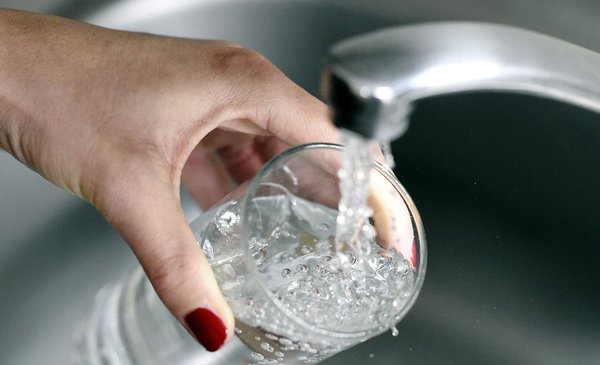He increased concentration of sodium and chloride in the tap water of Montevideo and Canelones —health warning through—, caused a direct impact on the consumption of the population. 70% of Montevideans and 64% of Canaries stopped drinking OSE water or, at least, decreased its use.
This is demonstrated by the latest survey by the Opción consultancy, whose consultation of 824 interviewees ended this Wednesday and was broadcast by Telenoche. In the two departments directly affected by the increase in salinity, a measure reached by OSE as a consequence of an unprecedented drought, only one in ten residents continues to drink tap water as they did before the water crisis.
Slightly more than half of the population of the capital and the metropolitan area completely cut consumptionclose to an eighth part reduced their use, and the rest did not drink OSE prior to the crisis.
The fall of the freshwater reserve of Paso Severino and Santa Lucía Grande led OSE to decide to “mix” the water with that which enters from the Río de la Plata, a little further south of the Aguas Corrientes dam. This meant an increase in sodium and chloride in the water volume.
Despite the fact that the authorities of the Ministry of Public Health clarified that consumption is enabled (although with precautions in the population at risk), the change in flavor, density or fear led to changes in behavior. Even in those apartments where, in theory, there were no changes in running water.
The Opción Consultores survey reveals that 17% of the inhabitants of the remaining 17 departments reduced or cut OSE consumption.
These geographical differences could explain why the drop in OSE consumption has been more pronounced among voters of the Broad Front than among the ruling party. Because although the vote of party confidence cannot be ruled out —on the one hand in the left mayors, on the other in the national government—, the metropolitan area is the bastion of the Frente Amplio.
Added to party preferences is another differentiation in behavior changes: age. The Ministry of Public Health recommended reducing the consumption of OSE water among hypertensives. And he even urged that “in the population with a greater risk of being hypertensive unknown, for example people over 60 years of age” there should be periodic blood pressure checks.
However, it is young people who have had a more noticeable change in consumption: 44% stopped drinking OSE water completely after the salinity increase. It is followed by middle-aged adults (34%) and then those over 60 (25%).
This could have at least two explanations: older adults were already the ones who consumed less running water prior to the water crisis (29%). And, on the other hand, a good part of the electorate of the government coalition is concentrated among those over 60 years of age.
“Despite the fact that regional and age differences strongly contribute to explaining that the changes in consumption are greater within the Frente Amplio electorate, the possibility of a properly ‘political’ effect on water consumption cannot be ruled out,” insists the report from the consultant. And he concludes: “Where OSE decided to increase the salinity levels of the water, the consumption of tap water was drastically and massively reduced, a figure that fully coincides with the reports of an explosion in demand and bottled water supply problems.”














